Learning about the best leafy greens to eat and how essential they are for your health and healing is one of the single most beneficial health moves you can make. Providing the broadest range of nutrients, phytochemicals, fiber, and chlorophyll, they are the number one food you can eat regularly to improve your health.
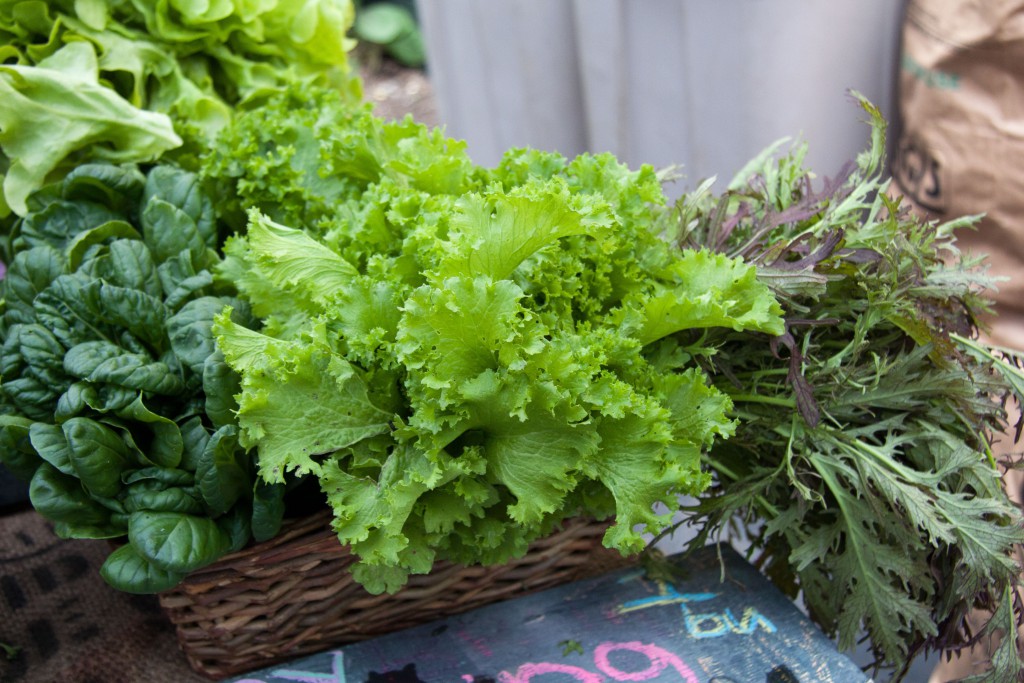
Unfortunately green vegetables in general are the foods most lacking in modern diets. When some people hear “leafy green vegetables” they think iceberg lettuce, but we’re gonna kick it up several notches ’cause that’s just how we roll here.
Let me show you all about the most nutritious leafy green vegetables, the nutrients they provide, and the best ways to eat them so they actually taste good, so you can get on with enjoying things like:
- More alkalinity and less inflammation
- Strong immune system
- Blood purification
- Improved circulation
- Improved digestion and overall gut health
- Improved liver, gall bladder, and kidney function
- Clearing of congestion, especially in the lungs by reducing mucus
Overall these things equate to improved moods, increased energy and vitality, glowing skin, and prevention, as well as treatment of, many diseases, especially chronic, degenerative diseases such as heart disease, diabetes, cancer, and arthritis. There is more evidence than ever showing that these vegetables can in fact have this huge of an impact on your quality and longevity of life.
Not a Fan of Vegetables? I Got You
When I was a kid I couldn’t stand vegetables, I smothered my broccoli in ketchup, ’cause that’s what you do when you hate the taste that bad – smother it in a sugary fake version of a veg, or ranch dressing, right?! To this day, I can’t honestly claim to love vegetables. And I’m fairly sure some of you would join my club.
But over the last say, ten years or so I began seeking out and experimenting with all sorts of veggies I’d never tried. To my surprise, I developed a new taste for many veggies, particularly greens I never even knew were edible. Parts I used to discard I learned how to prepare to actually taste really darn good.
Now I eat my veggies because I know what they do for me, I can feel a huge difference in my energy, vitality, and general health, and because they actually taste good. Trust me, if I conquered my fear of leafy greens so can you :) I get my greens at farmers market or the organic produce section of the grocery store when possible. The Dirty Dozen list is a great resource to make your produce shopping easier.
Kale (Collards)
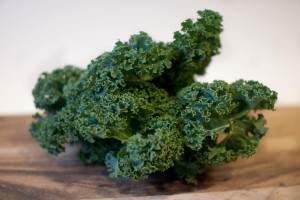
Why you need them: Kale and collards are essentially the same vegetable, only kale is less heat tolerant. They are excellent sources of carotenes to maintain eye health and prevent vision loss as you age, vitamin C to boost immunity and reduce free radical damage, and vitamin K and calcium for strong bones.
They contain glucosinolates, anticancer effects which improve your body’s ability to detoxify and eliminate harmful chemicals and hormones.
How to eat them: Add to smoothies or juice it. Add raw chopped leaves to salads like this Kick Ass Asian Kale Salad, or quinoa. Use leaves on sandwiches or wraps. Lightly saute in coconut or olive oil with some garlic, sea salt, and pepper, and finish in some vegetable broth or drizzle with apple cider or coconut vinegar. Add to soups, chili, or pasta. Top homemade pizza with it. Bake up some kale chips for a healthy snack.
Important note: It may be wise to consume no more than four servings per week of raw cruciferous vegetables. This cabbage family contains goitrogens, that can interfere with thyroid gland function, which is usually not an issue unless consumed in large amounts or there is an iodine deficiency. Individuals with existing and untreated thyroid conditions may want to avoid consumption of cruciferous vegetables in their raw form.
Cooking helps to inactivate the goitrogenic compounds. Also, individuals with a history of oxalate-containing kidney stones should avoid overconsuming kale, as it contains significant amounts of oxalate.
Swiss Chard
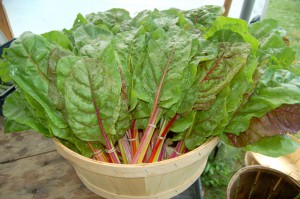
Why you need it: Swiss chard’s traditional nutrients combined with the abundance of carotenes, chlorophyll, and soluble fiber make it one of the most powerful anticancer greens, particularly against digestive tract cancers.
It also contains a significant amount of vitamin K per cup of cooked chard, important for bone health.
How to eat it: Add raw chopped leaves to salads. Use it place of bread as a wrap for tuna, or hummus and veggies. Saute the same as kale or lightly saute chopped leaves (no stems) in coconut oil with sea salt and curry powder, and once wilted turn off heat and stir in some organic plain yogurt. Add to frittatas, soups, or pastas.
Try my sautéed Swiss chard with toasted walnuts recipe!
Important note: Individuals with a history of oxalate-containing kidney stones should avoid overconsuming Swiss chard since it contains high amounts of oxalate. A tip to help balance the effect of oxalates is to cook your greens with something rich like, seeds, nuts, beans, butter, oil, or animal products.
Mustard Greens
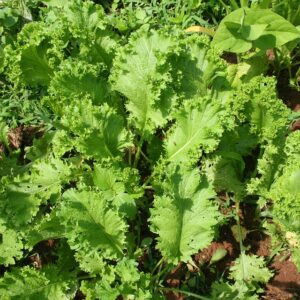
Why you need them: Mustard greens have a high content of antioxidants to reduce cellular damage, and anticancer glucosinolates. They are especially good for menopause, protecting against breast cancer, heart disease, and supporting bone health with calcium, magnesium, and folic acid.
How to eat them: Add young greens to salads and soups. Lightly saute with olive or coconut oil, walnuts, sea salt, and lemon juice.
Important note: The same notes on kale apply to mustard greens (see above). They become low oxalate when boiled.
Dandelion Greens
Why you need them: Overall dandelion is a rich source of medicinal compounds that have a “toning” effect on the body. It promotes and may improve liver function, weight loss, blood sugar control, and is a diuretic.
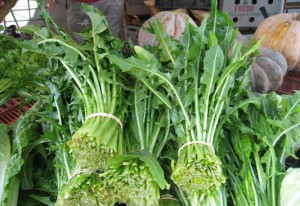
The bitter flavor which makes it good for the digestive system comes from guaianolides, which have intestinal germicidal, antiseptic, and expectorant effects. Turns out dandelions are much more than the pesky weeds you get annoyed with in your yard!
Tip: The best time to gather dandelion greens is in very early spring, when the bloom bud appears but before the stalk grows. After blooming, the greens become too bitter and tough to eat. Make sure they haven’t been sprayed with weed killer.
How to eat them: Make a salad with small leaves. Steam or boil young leaves, drain thoroughly and add butter, coconut oil, or olive oil and season with sea salt and pepper. Larger leaves can be prepared the same ways, mixing with half spinach to lessen the bitterness. For a triple green delight saute 1/2 bunch each dandelion greens, mustard greens, and kale in olive oil with sea salt and raisins until wilted, turn off heat and add toasted pine nuts and lemon juice.
Important note: The same note on swiss chard applies to dandelion greens (see above). Also, individuals with allergies to daisies may want to avoid these greens.
Spinach

Why you need it: Spinach is a healthy blood builder containing twice as much iron as most other greens, it’s one of the most alkalizing foods, richest sources of lutein, promoting healthy eyes and preventing macular degeneration and cataracts.
There are at least thirteen different flavonoid compounds in spinach which have been shown in studies to slow down cell division of human stomach cancer cells, reduce skin cancer in mice, and lower the incidence of breast cancer in women. No wonder Popeye was downing those cans of spinach all day long!
How to eat it: Spinach is so versatile, it’s one of those veggies you can hide in almost anything and even kids won’t know it’s there. Add to smoothies. Eat as a salad. Add on sandwiches or wraps. Steam, saute, add to scrambled eggs and frittatas. Add to soups, stir frys, asian noodles, fried rice, pasta, and quinoa. Bake into savory muffins.
Important note: The same note on swiss chard applies to spinach (see above). In addition individuals with gout should consume spinach in moderation.
Arugula

Why you need it: Arugula is rich in many vitamins and minerals including calcium, magnesium, and zinc, phytochemicals, and anticancer glucosinolates, which stimulate the body’s production of detoxification enzymes and exert antioxidant effects, reducing cellular damage.
How to eat it: Toss with other lettuces to balance out the peppery flavor. Use alone as a salad, complimenting with sweet fruits like oranges, or parmesan cheese and a vinaigrette. Add on sandwiches or wraps. Lightly steam or saute with olive oil and garlic. Add to pasta. Make arugula pesto.
Important note: The same note on swiss chard applies to arugula, it contains low oxalates (see above).
Watercress
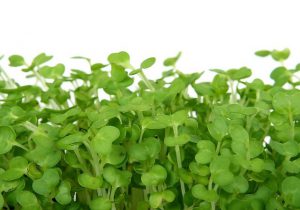
Why you need it: Watercress contains nitrates, which when consumed at high levels maintain healthy blood pressure, 1 cup of this green meets your daily RDI for vitamin K for healthy bones.
It contains alpha-lipoic acid, which has been shown to decrease blood sugar levels and increase insulin sensitivity in diabetics.
Sulforphane, a compound found in watercress and other cruciferous vegetables can inhibit the enzyme known to be involved in the progression of cancer cells. It’s also a significant source of omega-3 fatty acids.
How to eat it: Add to smoothies. Eat as a salad. Add to scrambled eggs, quinoa, sandwiches, or wraps. Saute in olive oil with sea salt, pepper, and finish with lemon juice and grated parmesan. Add to soups near end of cooking.
Important note: The same note on swiss chard applies to watercress, it contains low oxalates (see above).
Beet Greens
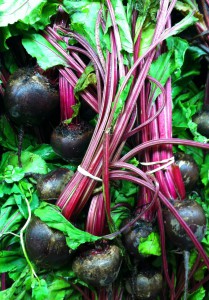
Why you need them: Beet greens are high in fiber, iron, Vitamins A and C for a strong immune system. They are rich in vitamin K, folic acid, calcium and magnesium for strong bones and cardiovascular health.
These greens are part of the chenopod family containing phytonutrients that support nervous system health. So think twice before tossing out those beet greens next time.
How to eat them: Mix leaves into salads. Lightly saute in olive oil with garlic, and sea salt. Boil them allowing the oxalic acid to leech into the water, bringing out a sweeter taste in the greens, while lowering the oxalate content. And when I juice beets, I toss the greens in with them.
Important note: The same note on swiss chard applies to beet greens (see above).
For the Love of Leafy Greens
Last but not least I have to give a shout out to the lettuce family, as in red, green, romaine, butter – all the lovely lettuce varieties packed with nutrients. So go ahead and load them up with veggies, proteins, healthy fats, and dig in. As you can see incorporating leafy green into your daily diet doesn’t have to be difficult or boring, especially with several ways to eat them.
P.S. The notes regarding goitrogens and oxalates are not meant to deter you from eating these types of greens, they are meant as a guideline for individuals with thyroid conditions or kidney stones, and a reminder in general not to overconsume any one thing, but rather to eat a wide variety of vegetables and whole foods for optimal nutrition.
Experiment with greens, find the ones you love and eat them often. When you get bored try greens that you’ve never heard of before, be adventurous and have fun while experimenting. Once you nourish yourself with greens, you will naturally crowd out the foods that make you sick, and experience the joy of a lighter, more flexible energy.

What a great article. You are preaching to the converted though with me as i LOVE my leafy greens lol. But I really enjoyed reading about the benefits and you have re-inspired me to make some kale chips. Haven’t made them for ages and perhaps my 4 year old will try them too! I also like the way you have added informative health notes too with each of the leafy veg and offered recipe tips. Long live leafy greens…:)
Shout out to a leafy greens lover! Funny you mention your 4 year old trying the kale chips, my sister recently made the recipe for my 2 and a half year old niece and she loved them :) I’m so happy you found the notes and tips helpful. I would love to hear how your kale chips turn out for you :)
Loved this article. I run an organic skin care website, and I can vouch for the accuracy of your statement that leafy greens are crucial for glowing, beautiful skin! In fact, they are my top recommended food for healthy skin, too. And then there are all those other benefits you mentioned! Yep–greens are where it’s at.
Thanks for sharing this helpful (or should I say, “healthful”) information!
Awesome, Angela! Glad you enjoyed it. You know what’s up Lol! We are what we eat right?! It makes me so happy that you recommend leafy greens for great skin :) Keep on spreading the love!
Hi Jess,
Great article on the leafy greens. As a kid I hated vegetables. But overtime, I’ve learned the benefits of eating them and not just your classic broccoli and lettuce. Spinach is good for your eyesight. Certain long string beans too! (i know they’re not leafy).
Now that I am getting older, I better take care of my body while I’m still young lest I suffer the consequences in the future. My wife loves her salads as well.
Thank you for sharing,
Drew
Cool! This is great Drew…I can totally relate to having to learn to like veggies, after all I did used to smother my broccoli in ketchup…yuck! The things you do when you’re a kid lol! I’m totally with you on the aging aspect, nothing lasts forever, so taking the best care of it while you have it is sure worth improving your quality of life in the meantime :)
I love salads too (if they’re interesting)! Since your wife loves salads and if she also enjoys kale, one the most nutrient dense leafy greens mentioned here, here’s my Kick Ass (sorry but it is :) Asian Kale Salad Recipe I think she will enjoy. Thanks for mentioning the string beans as I have been wanting to do a post on the healthiest non leafy veg too :)
Thank you for the reminder to eat more leafy greens, and for outlining all the health benefits of each one!
I am a vegetable-lover, but I also hate green salads with a burning passion. So I was happy to see your recommendations for non-salad ways to eat these veggies. I especially love using them in smoothies.
For sure Samantha! I totally get it, eating vegetables in general has never come easy for me lol, but nowadays they are a staple in my diet, especially leafy greens for their nutrient density and alkalinity. I agree, I love them in smoothies too :) Since you’re into smoothies you may wanna check out a few of my posts about them and some recipes too!
5 Top Superfoods to Turbo Charge Your Smoothies
Healthy Smoothies to Lose Weight and Feel Great
http://essentialsofselfcare.com/category/smoothies
Hey There Jess!
This is a very well informed article! I have learnt many things about leafy green vegetables! I didn’t even know that some of these existed! So thank you for writing such an article as I can clearly see that you have done your research, I better go buy some leafy green vegetables now see ya! Take Care!
Thanks Shane! So glad you learned some new things about greens, they’re pretty amazing veggies so eat up and enjoy! To your health and happiness :)
Hey Jess,
Thanks for writing this article as there are so many more options in the greens family of veggies that are edible than I ever thought possible. I think as children most of shy away from veggies preferring much less healthy choice for our bodies such as sweet and salty snacks instead. However as an adult I realized I love vegetables; who would have thought. I actually have always enjoyed salads and with all the new options you have discussed it will be fun and enjoyable trying each one of these in different salad combinations.
John
Happy I could open the door to trying some new types of leafy greens, John :) Have fun experimenting, and let us know if you discover something delicious!